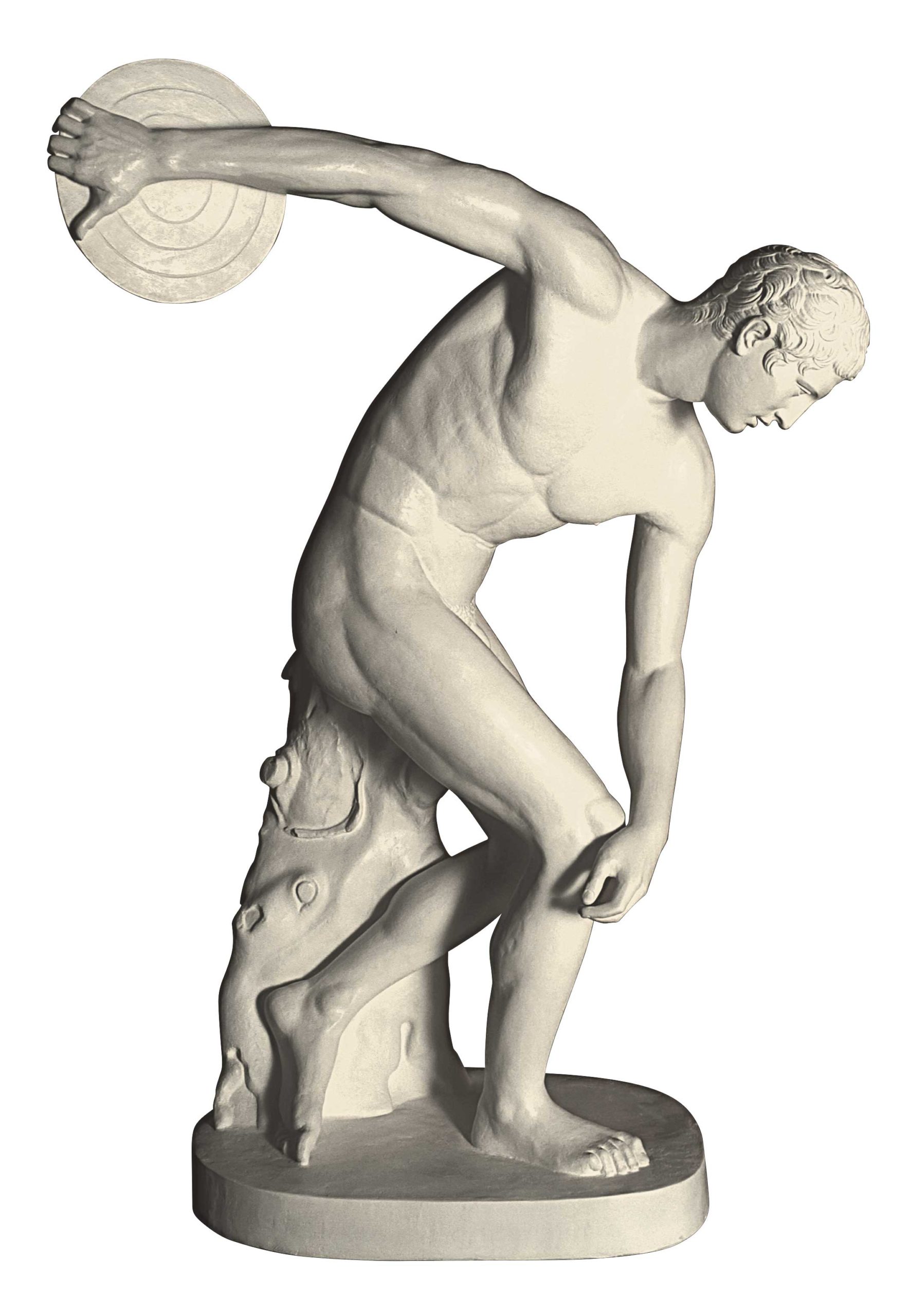Work: The Discobolus
Copy of sculpture

Copy
- Dimensions
- 156 cm high base included, 108 cm wide, 100 cm deep
- Technique
- cast from the original
- Material
- alabaster plaster
- Space
- Greek and Roman
Original
- Date
- 455 BC; Roman copy 117 - 138 AC
- Period
- Greek
- Dimensions
- 133 cm high, 108 cm wide, 100 cm deep
- Material
- marble
- Location
- Vatican City, Vatican MuseumsSi apre in una nuova finestra
Photo: Maurizio Bolognini. Museo Tattile Statale Omero Archive.
Description
“Antiquity could say of him that he had multiplied the truth but that, curious as he was above all about bodies, he had not conveyed the state of mind. And so, while Myron is the first of the great sculptors of antiquity, he is also the last of the archaic sculptors”, Alessandro della Seta.
The “Discobolo” (Discobolus) is a bronze sculpture made by Myron in 455 BCE. The Museo Omero has a copy from true cast of a Roman marble copy found at Hadrian’s Villa in Tivoli. The head is modern, dating to the late eighteenth century.
The statue shows an athlete who is about to throw a discus. The face and torso are leaning forwards; the right arm, with its hand holding the disc, is stretched back and upwards to generate momentum, while the left is curved forwards, with the wrist touching the right knee. The knees are bent, the right leg is set slightly ahead of the other and appears to support the weight of the body, while only on the toes of the left foot touch the ground.
One of the strengths of the work is its harmonious composition: if you slide your fingers from the hands holding the disc down to the heel of the left foot, you will realize that the lines drawn by the various parts of the body draw an arc.
Myron has taken great care in rendering some of the anatomical details, such as the chest muscles, the tendons and the swollen veins of the right hand that convey the athlete’s exertion. The sculptor shows the body at the moment of maximum tension. However, this is not reflected in the idealized face which only expresses a slight concentration, betrayed by the partially open mouth and a little wrinkle on the forehead.
Behind the figure there is a tree trunk, which was certainly absent in the bronze original, but which had to be added to the Roman marble copy in order to support the weight.
The Discobolus is certainly Myron’s best known work as well as being an icon of Greek art. It embodies some of the principal ideas relating to ancient Greece: the passion for the Olympic games, the cult of the perfection of the human body, inner calm and the search for formal harmony. The bronze was possibly made for the city of Sparta and might represent Hyacinth, the boy loved by Apollo.
